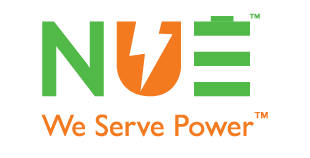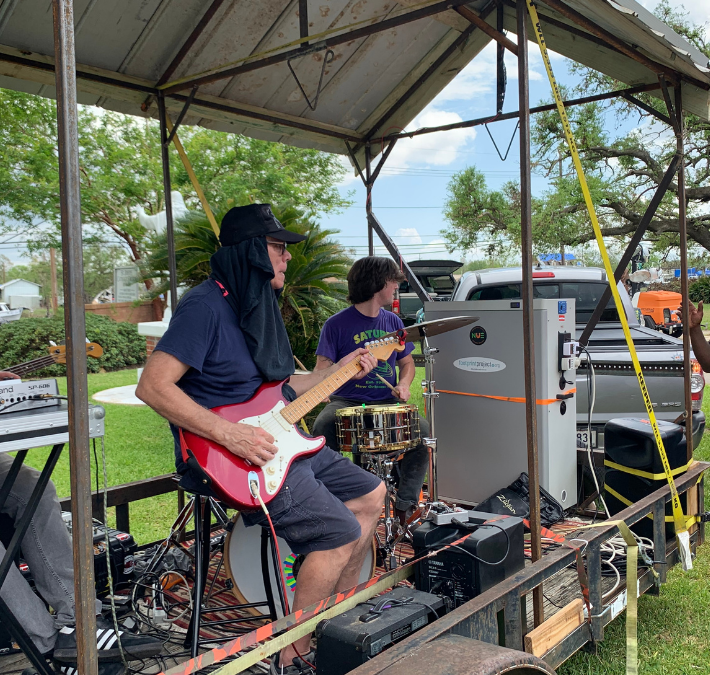Read our chat with New Use Energy CEO Paul Shmotolokha about NUE’s deployment to Louisiana with Footprint Project in the aftermath of Hurricane Ida.

Q: What prompted New Use Energy’s deployment to Louisiana?
Paul Shmotolokha: This is part of our core mission. We have a priority set for emergency managers and disaster response and so for us, it was a natural deployment to do. We have a broad product line of sizes of solar generators designed for replacing the use of portable generators, which have traditionally been the go-to source of power after major disasters.
People are increasingly realizing the issues with portable generators. They need to restock the gasoline, there’s excessive noise, mistakes using the equipment and the CO2 emissions from it.
We immediately reached out to some of our NGO partners like Footprint Project once the power of the hurricane came to bear and we were able to see the impact.
So, you know, if it came over as a category one storm, it might not have been as big of a deal. But it came over very strong, especially hitting those barrier islands. So we just knew there was going to be a problem there. In this case we knew due to the severity of it that the rural areas would be the worst part hit.
Q: Talk about the need for reliable energy in Louisiana after the hurricane.
PS: The damage south of New Orleans was really where things were most acute and what happened immediately is the gas stations ran out of gasoline.They emptied out the gasoline stations and then the ability to pump was hampered. And then the resupply trucks were blocked for making it down, due to dangerous debris conditions on the road.
So people were stranded without gasoline. There were altercations in lines at gasoline stations for the few that could still operate after the electricity was out. Even some of the people that had their own generators, uh, ran out of gas for their own generators.
The farther south you went, the more isolated everybody was and the roads were devastated. The devastation to the utility infrastructure was really bad. The storm just took about every pole down.
Q: What did NUE do to help the situation?
PS: We had a team from Footprint Project that arrived several days after the storm. It was just luck that they were north in Tennessee doing some clean energy charging stations at the Bonnaroo music festival which was then actually cancelled due to the storm.
They mobilized right away. We got a couple of trailers together, some SunKits and PowerPacs that they had for the festival. And they just started heading south. This is what they do. They came ready. They started initially staging in New Orleans and realized that within a couple of days of power was going to come back there.
So they started venturing south and they just saw how bad the situation was. The wind damage was the key on this hurricane. Katrina was terrible due to the water damage and the lack of functioning levees. Ida was much worse when it came to wind. When you get south of New Orleans, it is very rural. There’s a lot of people living on homes that are on stilts.
It was terrible. Whole homes were just gone. So there was just a huge amount of people left without homes.
It was then that we saw that this was a long-term challenge and not just a short term one. Initial indications were that electricity was going to come back to some locations in a couple of weeks. It turned out to be several months. You can’t run a gas generator for several months. It’s hard and it’s very costly.
We initially deployed systems in community centers and in places that really were force multiplication in terms of helping people. And then the longer we went, the more we focused on the longer-term situation.
After a month or so, Footprint Project redeployed our systems. And I think that’s a big thing for us – our systems are very easy to redeploy. They’re mobile and with solar, we just have to find the right location to put the panels.
Footprint redeployed to those areas farther south that we couldn’t even reach initially. We even had systems being ferried by boat which is pretty impressive that we can take a system, put it on a boat, add some solar panels and then get it out to islands on the Bayou.
We were still doing installations in December working with groups like the Louisiana Solar Fund and Nouveau Electric Records and Another Gulf is Possible. We were making installations for temporary housing, for those who lost their homes completely. And there’s a lot of people, there are hundreds, if not thousands who, uh, have lost their homes. For some of them, they’ve had temporary shelters built and they need power to them. So they are literally out living in these shelters on their property very often. So there’s no power, no electrical junction boxes, and we give them a safe daily, renewable solution. So far, I think we’ve made about eight to ten installations.
We were lucky that Footprint Project arrived with solutions, but once they arrived, they realized they needed a lot more than they had. Going forward, we’re hoping to work with them and others to have more equipment pre-positioned close by so that it’s easier to bring it in. But we also helped fundraise for a Footprint Project to be able to fund more of their activities.
Q: How did it feel to help the people in the aftermath of the hurricane?
PS: For me it was a tremendous learning experience, but it was also an opportunity to really understand the dilemma on the part of people who live in these areas after a major event like this. It was devastating. It was kind of soul crushing at times, even, but the fortitude of the people was tremendous.
Probably the highlight was when we were down there, we powered a morale concert from a mobile solar stage for Louis Michot, the lead singer of the Lost Bayou Ramblers, a Grammy award-winning band and the owner of Nouveau Electric Records who works with us and also pioneers the Louisiana Solar Fund. His stage ran all day, even through a big rainstorm. The band went through all these devastated neighborhoods and people just came out of their houses and started dancing and they organized some great food and beverages.
That was quite a moving experience. Bonding immediately with people you’ve never met and just making it happen. So, how do we feel after the aftermath? We feel our work isn’t done yet. And so that’s why we were still working in November and December. There’s going to be people without homes for another year.
Thankfully it’s a warmer climate there, but we continue to seek out funding and opportunities so that these people can have power in their temporary shelters. People can come back but it’s tough.
Q: What lessons did you learn from this deployment?
PS: We show that our solutions prove themselves. It validated our whole product strategy of having ultra portable PowerPacs, the SunKits and the larger systems like the trailers.
Product-wise that was the biggest learning experience. We made some changes to our products that made them super easy to move before the hurricane that helped and the experience showed our products are super tough as well. We also really saw the benefit of having portable solar panels.







